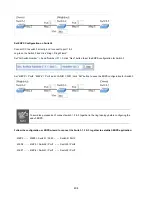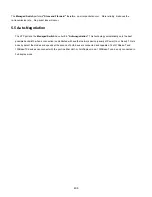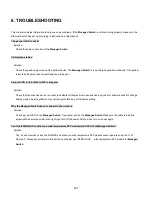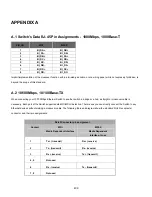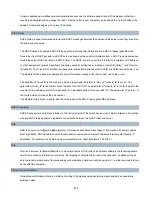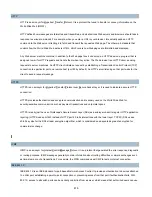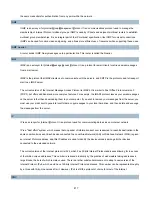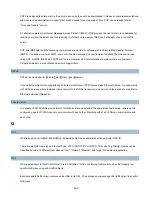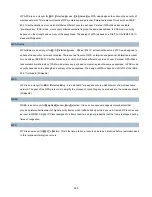
418
IPMC is an acronym for
IP
M
ulti
C
ast.
IPMC supports IPv4 and IPv6 multicasting. IPMCv4 denotes multicast for IPv4. IPMCv6 denotes multicast for IPv6.
IP Source Guard
IP Source Guard is a secure feature used to restrict IP traffic on DHCP snooping untrusted ports by filtering traffic based
on the DHCP Snooping Table or manually configured IP Source Bindings. It helps prevent IP spoofing attacks when a
host tries to spoof and use the IP address of another host.
L
LACP
LACP is an IEEE 802.3ad standard protocol. The
L
ink
A
ggregation
C
ontrol
P
rotocol, allows bundling several physical
ports together to form a single logical port.
LLC
The IEEE 802.2
L
ogical
L
ink
C
ontrol (LLC) protocol provides a link mechanism for upper layer protocols. It is the upper
sub-layer of the Data Link Layer and provides multiplexing mechanisms that make it possible for several network
protocols (IP, IPX) to coexist within a multipoint network. LLC header consists of 1 byte DSAP (Destination Service
Access Point), 1 byte SSAP (Source Service Access Point), 1 or 2 bytes Control field followed by LLC information.
LLDP
LLDP is an IEEE 802.1ab standard protocol.
The
L
ink
L
ayer
D
iscovery
P
rotocol (LLDP) specified in this standard allows stations attached to an IEEE 802 LAN to
advertise, to other stations attached to the same IEEE 802 LAN, the major capabilities provided by the system
incorporating that station, the management address or addresses of the entity or entities that provide management of
those capabilities, and the identification of the stations point of attachment to the IEEE 802 LAN required by those
management entity or entities. The information distributed via this protocol is stored by its recipients in a standard
Management Information Base (MIB), making it possible for the information to be accessed by a Network Management
System (NMS) using a management protocol such as the Simple Network Management Protocol (SNMP).
LLDP-MED
LLDP-MED is an extension of IEEE 802.1ab and is defined by the telecommunication industry association (TIA-1057).
LLQI
LLQI (Last Listener Query Interval) is the maximun response time used to calculate the Maximun Respse Code inserted
into Specific Queries. It is used to detect the departure of the last listener for a multicast address or source. In IGMP, this
term is called LMQI (Last Member Query Interval).
Summary of Contents for NS4750-24S-4T-4X
Page 1: ...NS4750 24S 4T 4X User Manual P N 1702826 REV 00 01 ISS 14JUL14 ...
Page 56: ...56 Figure 4 2 7 Privilege Levels Configuration Page Screenshot ...
Page 110: ...110 Figure 4 4 6 Mirror Configuration Page Screenshot ...
Page 117: ...117 Figure 4 5 4 LACP Port Configuration Page Screenshot ...
Page 174: ...174 Figure 4 7 10 MST1 MSTI Port Configuration Page Screenshot ...
Page 180: ...180 Figure 4 8 2 Multicast Flooding ...
Page 249: ...249 Figure 4 9 18 Voice VLAN Configuration Page Screenshot ...
Page 271: ...271 Counter Counts the number of frames that match this ACE ...
Page 281: ...281 Figure 4 11 4 Network Access Server Configuration Page Screenshot ...
Page 315: ...315 ...
Page 328: ...328 ...
Page 335: ...335 ...
Page 346: ...346 Figure 4 14 1 LLDP Configuration Page Screenshot ...
Page 350: ...350 Figure 4 14 2 LLDP MED Configuration Page Screenshot ...
Page 372: ...372 Figure 4 16 1 Loop Protection Configuration Page Screenshot ...

